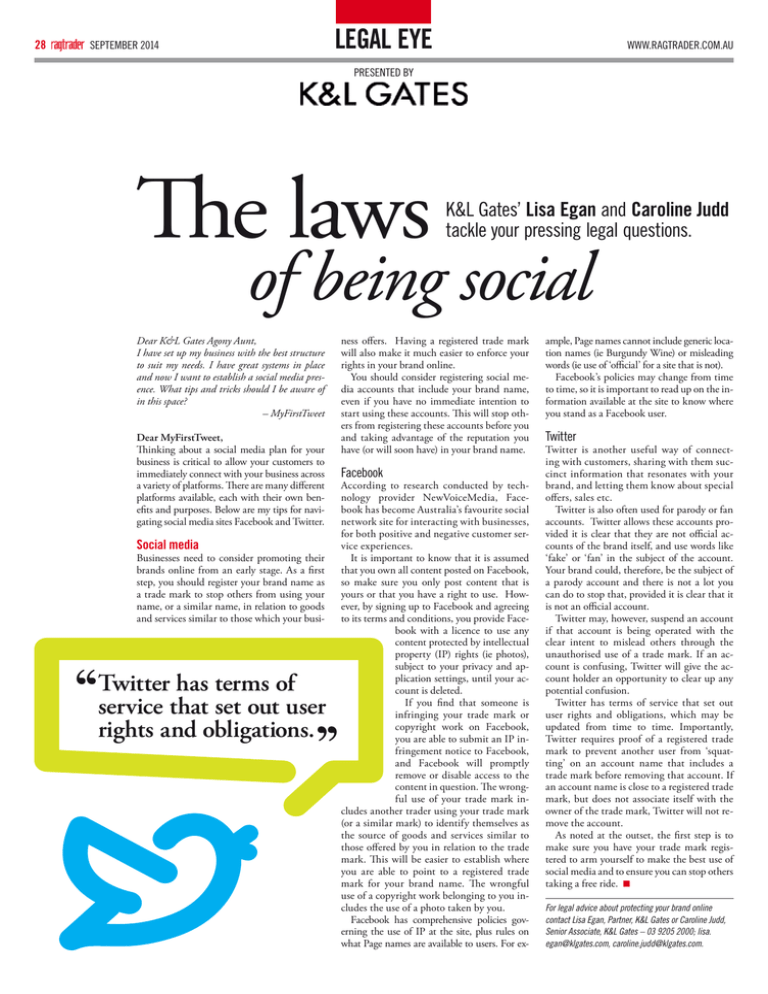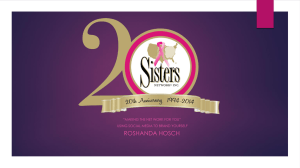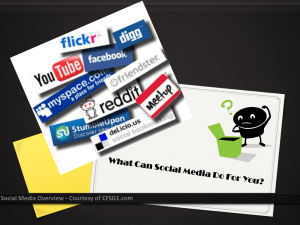Document 13395688
advertisement

28 legal eye september 2014 www.ragtrader.com.au PRESENTED BY The laws K&L Gates’ Lisa Egan and Caroline Judd tackle your pressing legal questions. of being social Dear K&L Gates Agony Aunt, I have set up my business with the best structure to suit my needs. I have great systems in place and now I want to establish a social media presence. What tips and tricks should I be aware of in this space? – MyFirstTweet Dear MyFirstTweet, Thinking about a social media plan for your business is critical to allow your customers to immediately connect with your business across a variety of platforms. There are many different platforms available, each with their own benefits and purposes. Below are my tips for navigating social media sites Facebook and Twitter. Social media Businesses need to consider promoting their brands online from an early stage. As a first step, you should register your brand name as a trade mark to stop others from using your name, or a similar name, in relation to goods and services similar to those which your busi- Twitter has terms of service that set out user rights and obligations. ness offers. Having a registered trade mark will also make it much easier to enforce your rights in your brand online. You should consider registering social media accounts that include your brand name, even if you have no immediate intention to start using these accounts. This will stop others from registering these accounts before you and taking advantage of the reputation you have (or will soon have) in your brand name. Facebook According to research conducted by technology provider NewVoiceMedia, Facebook has become Australia’s favourite social network site for interacting with businesses, for both positive and negative customer service experiences. It is important to know that it is assumed that you own all content posted on Facebook, so make sure you only post content that is yours or that you have a right to use. However, by signing up to Facebook and agreeing to its terms and conditions, you provide Facebook with a licence to use any content protected by intellectual property (IP) rights (ie photos), subject to your privacy and application settings, until your account is deleted. If you find that someone is infringing your trade mark or copyright work on Facebook, you are able to submit an IP infringement notice to Facebook, and Facebook will promptly remove or disable access to the content in question. The wrongful use of your trade mark includes another trader using your trade mark (or a similar mark) to identify themselves as the source of goods and services similar to those offered by you in relation to the trade mark. This will be easier to establish where you are able to point to a registered trade mark for your brand name. The wrongful use of a copyright work belonging to you includes the use of a photo taken by you. Facebook has comprehensive policies governing the use of IP at the site, plus rules on what Page names are available to users. For ex- ample, Page names cannot include generic location names (ie Burgundy Wine) or misleading words (ie use of ‘official’ for a site that is not). Facebook’s policies may change from time to time, so it is important to read up on the information available at the site to know where you stand as a Facebook user. Twitter Twitter is another useful way of connecting with customers, sharing with them succinct information that resonates with your brand, and letting them know about special offers, sales etc. Twitter is also often used for parody or fan accounts. Twitter allows these accounts provided it is clear that they are not official accounts of the brand itself, and use words like ‘fake’ or ‘fan’ in the subject of the account. Your brand could, therefore, be the subject of a parody account and there is not a lot you can do to stop that, provided it is clear that it is not an official account. Twitter may, however, suspend an account if that account is being operated with the clear intent to mislead others through the unauthorised use of a trade mark. If an account is confusing, Twitter will give the account holder an opportunity to clear up any potential confusion. Twitter has terms of service that set out user rights and obligations, which may be updated from time to time. Importantly, Twitter requires proof of a registered trade mark to prevent another user from ‘squatting’ on an account name that includes a trade mark before removing that account. If an account name is close to a registered trade mark, but does not associate itself with the owner of the trade mark, Twitter will not remove the account. As noted at the outset, the first step is to make sure you have your trade mark registered to arm yourself to make the best use of social media and to ensure you can stop others taking a free ride. ■ For legal advice about protecting your brand online contact Lisa Egan, Partner, K&L Gates or Caroline Judd, Senior Associate, K&L Gates – 03 9205 2000; lisa. egan@klgates.com, caroline.judd@klgates.com.






